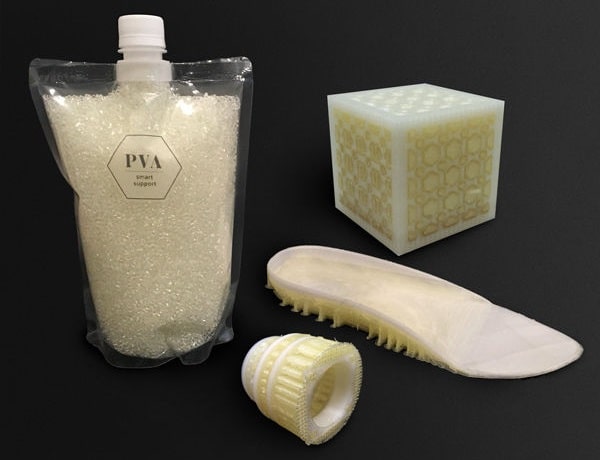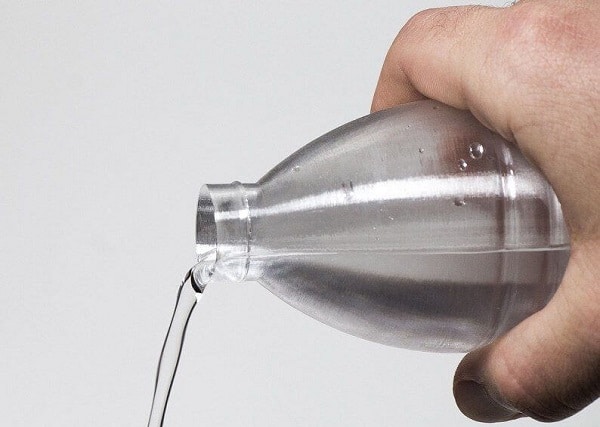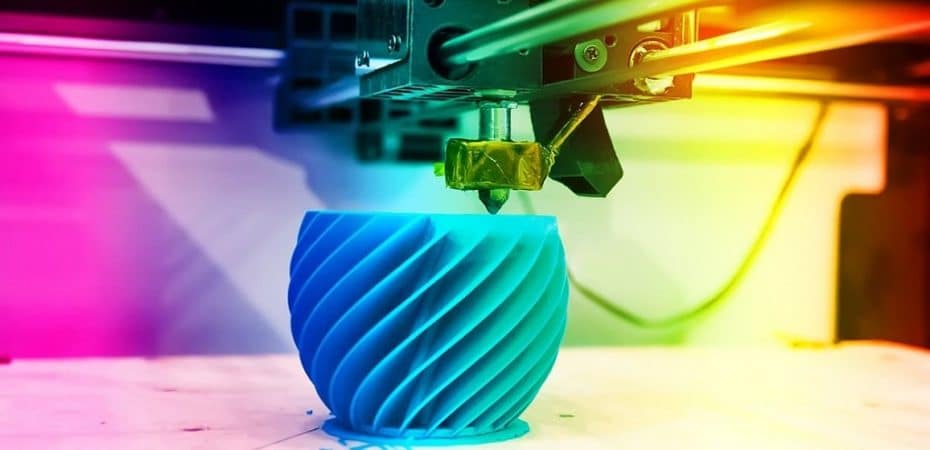If you’re considering purchasing a 3D printer, one of the things you’ll need to think about is what type of material you want to use. Various filaments can be used for 3D printing. Below we describe the most popular 3D printer materials so that you can make an informed decision about which one is right for your next project.
The 6 Main 3D Printer Materials
1. PLA (Polylactic Acid)

PLA is one of the most popular 3D printer materials. It is made from renewable resources like cornstarch or sugar cane, making it more environmentally friendly. PLA is also biodegradable, so it’s a good choice if you’re looking for a material that won’t add to your landfill waste.
PLA can be used in 3D printing prototype parts, containers, and low-wear toys.
One downside of PLA is that it has a lower melting point than some other materials, so it’s not ideal for printing objects that will be exposed to high temperatures.
2. ABS (Acrylonitrile Butadiene Styrene)
ABS is a strong and durable filament good choice for printing objects that will be used frequently or subjected to wear and tear. It’s usually used in 3D printing toys, medical devices, and home appliances.
ABS filament is also heat-resistant, so that it can be used for objects exposed to high temperatures. However, ABS is known to produce toxic fumes that are unpleasant to many people. So it’s essential to ensure your workspace is well-ventilated when printing with this material.
3) PVA (Polyvinyl Alcohol)

PVA is a water-soluble support material commonly used in conjunction with ABS or PLA. This means that PVA can be used to print supports for your object, which can later be dissolved in water. If you are using a dual extruder 3D printer, one extruder can print the supports with PVA, as the other extruder is used in printing the other parts of the design.
PVA is also biodegradable and environmentally friendly. However, because PVA dissolves in water, it’s not an ideal choice for printing objects that will come into contact with moisture.
4. ASA (Acrylonitrile Styrene Acrylate)
ASA filament is a type of 3D printing filament made from acrylonitrile styrene acrylic. It is a strong, durable material resistant to UV light and weathering.
This filament is often used for making industrial-grade 3D-printed parts like car parts and electrical installations. Though it’s easier to print with than ABS and PLA, it’s usually prone to warping and tends to change color when it comes into contact with a harsh environment, but the results are typically very high-quality.
ASA is typically more expensive than other filament types, but it is worth the investment if you need a strong, durable material.
5. PETG

PETG filament is a 3D printing material that offers a unique combination of properties, and it’s strong and durable.
In addition, PETG is transparent, making it ideal for creating clear or tinted parts. PETG also has excellent chemical resistance, which means it can withstand harsh cleaning products and fumes and is also odorless when printing.
PETG is commonly used in packaging like food containers. It’s also used in making medical implants as it can survive harsh sterilization processes.
6. Nylon Filament
Nylon is a flexible, strong, and durable filament. Nylon filament is not brittle as ABS and PLA and is wear resistant.
The high strength, resistance to high strength, and flexibility of nylon make it useful in 3D printing engineering parts like gears. The fashion industry is usually used to make fabric for products like raincoats and athletic wear. It’s also used in the textile industry to create food packaging and fishing lines.
Conclusion
With so many types of 3D printer materials on the market, it can be challenging to decide which is best for your needs. The six types of filaments we’ve outlined should give you a good starting point when choosing the right one for your project. But the main criteria to use when selecting the filament should be the type of object you want to 3D print and its purpose.
Read also:

